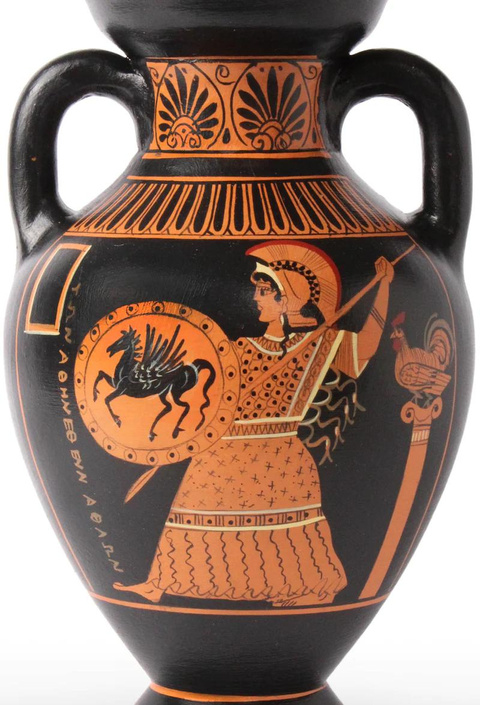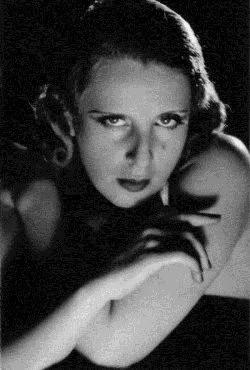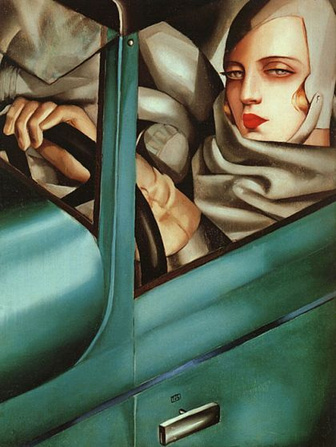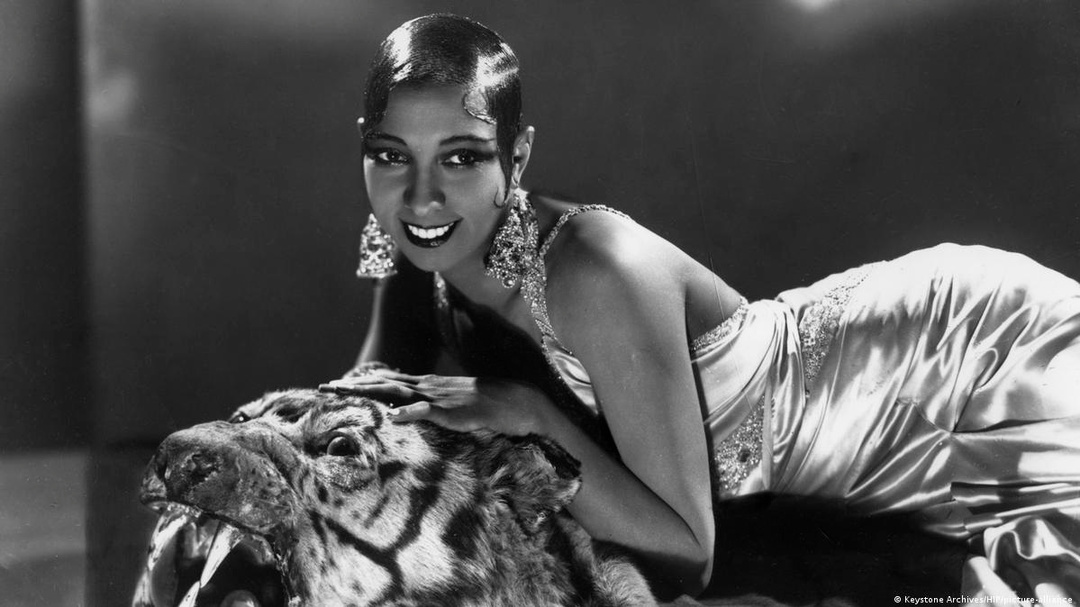Women in 1900's Paris: Sexualization Through art, performance, and literature
A racial, cultural, and historical lens
By: Bridget Miller
Sexualization in Paris 1900's
Defining Sexualization and exoticism
Sexualization walks a fine line between liberation and oppression. For many women, sexualization may be liberating as allows them to reclaim their body and be unapologetic about their desires, creating a norm around feminine desire. However, sexualization can play into patriarchal ideas around the male gaze that further traps women in a power struggle with men. This is further complicated when outsiders have exoticized images and fascinations with women of different races or cultural backgrounds. When sexualization and exoticism are combined, it leads to the term "sexotic": "At the same time, we place special emphasis on processes of sexualization that constructs the ‘exotic’ as sexually attractive, desirable and stimulating. This dimension of sexoticization entails, for example, the sexual fetishization of a certain skin color or images of the beach as a space that facilitates passionate sex. The term sexotic thus serves to expose the sexual quality commonly associated with the exotic and the exotic quality associated with sex." (Schaper et al, 2020, 115) For women of differing races and cultures, they may be able to reclaim both sexualization and exoticism and portray their truth through the arts. However, those outside of the culture may exhibit practices of "othering" towards portrayals of differing cultures.
Privilege and Power
White women of wealthy heterosexual backgrounds during this time period automatically have more privilege than different races and cultures of women such as African American women, as they do not have to deal with other intersectional forms of oppression such as race or class or sexuality Yet, these women have in common the sense of reclaiming power from men in society and showing their value and talent as women.
Orientaalism and fetishization
Orientalism is a Western European perspective of being fascinated with Eastern countries and the "Othering" of them. It is very exoticizing towards other cultures. This can lead to ideas of fetishization of other cultures and races that is not apart of ones own, where certain cultural traits are made to be seen in a sexualized way, when inherently they are not sexual in nature.
The Women Analyzed
Rachilde
Writer
- Novel "The Juggler"
- Sexualization and Orientalism
- Misanthrope
- White woman born in France
Tamara de Lempicka
Artist
- Wealthy and Privileged Background
- Bisexual
- Explores nudes and womanly agency and power in art
Ida Rubinstein
Performer
- Russian
- Jewish
- Very wealthy background
- Lesbian
- Not received well in many audiences
Josephine Baker
Performer
- African American woman
- Apart of WWII resistance in France
- Danced, sang, and was in several films
Rachilde (1860-1953)
Rachilde’s background lends itself to a woman that does not like people or associate with the idea of feminism. Within her book “the Juggler”, Rachilde describes objects more than her subjects, creating an objectified lens into their lives. Her character Eliante portrays a woman of wealth that is fascinated by the oriental. Thus, Rachilde participates in this notion of “othering” and exoticizing other cultures that she is not a part of by being a woman from western culture. On the other hand, her character Leon portrays a man of lower status and lesser age than Eliante who feels he must prove himself and is bothered by Eliante’s lack of interest in him. He feels that he is privileged to her body by being a man, yet Rachilde twists this manly privilege around for this time period and gives the woman, Eliante, the power and privilege.

Orientalism and Power Roles Within "The Juggler" (1900)
The Vase Scene (p. 23)
Eliante shows Leon a Greek amphora vase that she posesses in her salon collection. In the process of describing the vase, she experiences an orgasm. This suggests that her sexuality is fascinated by what is oriental. She is not satisfied with Leon, a french man, she yearns for the "other" of that from the eastern cultures. At the same time, she takes away power from Leon and shows him she can create her own pleasure.
Eliante's relationship to Ninaude (p.135)
Ninuade was the black servant to Eliante and her family. She raised Eliante when her mother died, and Eliante refers to Ninuade as her "only family." Yet their power dynamic together is not one of family, as Eliante has privilege and wealth that Ninuade will never possess as her servant and with her status of race at that time period.
Eliante's Background
Eliante comes from and was raised in the colonies of France. She came from multicultural background, yet she is a white woman who does not understand the oppression that those native to the colonies endure. She is not one who expresses her sexuality openly and is very independent. Rachilde writing this character adds exoticzing elements of the oriental, but at the same time takes power away from men.

Tamara de Lempicka (1898-1980)
Tamara de Lempicka comes from a wealthy and privileged background. However, she is also a bisexual woman, and this expression of her sexuality shines through in her artwork. Her self-portraits exude the power of women, yet her art also depicts sexualization through nudes and groups of nude women together. Her artwork implies how she could be using her sexuality as a bisexual woman to portray her work for both the male and female gaze. She reclaims typically male themes for women and gives agency and mobility to her art subjects. The eroticism of her nude pieces plays with sexual identity during the time period by giving power to the women in her work with what she chooses to show and not show. It can be questioned however if her work would have been received the same or if she could have even done the same work if she had not come from her privileged and wealthy background as a woman of western decent.
Using Status and Sexuality to her Advantage in Art
Lempicka’s self-portrait exudes confidence and agency as a woman partaking in the modernity during this time period. It puts the woman in a position of control and gives her power, yet her eyes and red lipstick still portray a sense of femininity and sexualization that emphasizes a woman confident in her sexuality is a woman in power and in control. However, the portrait is very crammed giving little space, yet allowing the viewer to notice these intimate and seductive qualities. (Birnbaum, p.96)

Self-Portrait (1929)
This piece portrays a woman in a harem, lending itself to sexual nature as a nude as well. The arm placement behind her head further illustrates the lounging and intimate quality. (Birnbaum, p.97) The shadowing, however, covers up parts of the woman’s body, adding to mystery and perhaps even a sense of yearning to see more. Lempicka plays with the body parts that are shown and not shown to create a sense of sexual fantasy and desire. (Birnbaum, p.98) By not giving the woman nipples, she adds a level of obscureness as well and a veiling despite this piece still depicting a nude woman. She gives the harem woman power in this regard over her body and leaves the viewer wanting more.
La Belle Rafaela (1927)

Group of Four Nudes (1925)
This piece portrays four women from a harem and has a very exoticized quality to it. The expressions and positions of their bodies exudes female desire, sexuality, and agency. (Birnbaum, p 102) She is playing into female desire and homoeroticism, while also playing into male desire and fantasies of women. This clash in audience viewpoints leads to a mixture of inclusivity and honing into Lempicka’s own desires perhaps as a bisexual woman, yet also oppression as it places women of lower status than her in a harem into the view of male desire. Her take ofsexualization in her artwork lends itself to a sense of female power, while also taking part in patriarchal wishes.

Ida Rubinstein was a Russian dancer that moved to France and performed, yet she had minimal skills in dancing. She was even often criticized for her lack of ballet skills and incorporated other styles like burlesque and modern dance that made some audience members see her as an "angular mime”. (Vertinsky, p.130) Growing up wealthy allowed Rubinstein to pay her way to fame. A fortune that many did not have. This fortune allowed her to do what she wished, be it traveling, dabbling in the exotics, or performing in the ways she wished to without a proper background in the skills of ballet dancing or without the favor of the public. However, Rubinstein was also of Jewish faith and religion, and her background from the east was different of the performers during this time from the west. She had to flee when Nazi Germany arrived in France. Her sexuality was also not heterosexual, as she was a lesbian and she had relations with Romaine Brooks. She posed for Brookes in the nude many times for her work. (Vertinsky, p.131) She had a flamboyant style in her performances and was not afraid to show off her feminine form on the stage as off the stage as shown with her posing for nude portraits for Brookes. She homed in her feminine eroticism and was often referred to as “a Hebrew princess”, which casted her in the eyes of the public as the “other.” Her sexualization of herself in her works often lead others to act in oppressive ways, leading to her audiences stereotyping her in her roles.
Ida Rubinstein (1883-1960)
Rubinstein's Self vs Audience's Sexualization of Her
Portrayal of Salomé
Female characters had a quality of hiddenness to them, yet also sexualized. This character was representing the daughter of Herodias from Christian myths. She was one of the first actresses playing this role that undressed on the stage in her own production. This led to many people who saw this partaking in “orientalism, antisemitism, and misogyny”. (Vertinsky, 123) While Rubinstein is freeing herself in her performance, the way she is received further puts her down. Her performances are not successful in changing the narrow minds of her audience members, and she receives a lot of hate and not much respect.
The “Other”
As a Jewish, Russian performer in France during this time, she is very much still seen at the “other” as something other than the western civilization and to be not treated with the same respect. While she often marches to the beat of her own drum and does what she wishes due to her wealth, those who did not have that wealth would not be able to do what she did at this time. By putting herself and her body on display in this way, she was putting herself forward to be looked upon. “In short, according to Peter Wollen, “she made herself an object of fascination, a trap for the gaze both on and off the stage.” (Vertinsky, 128) This gaze was often unwelcoming and disapproving of her work, as well as objectifying her as an "other."
Veils and Performance Techniques
Rubinstein had an aspect of mystery in her performance, as while she revealed some of herself, she never did so fully. This may have added to her alluring and sexualizing technique in her performances. She would pose and move in ways that some considered art while others thought of as “inhuman” and “cold”. (Vertinsky, 130) This inhuman quality she had on the stage may have removed some of her own identity from her performances and may have lent itself to her escaping from a world where she is always watched as herself, so she could act as another and free herself from those burdens.

Josephine Baker (1906-1975)
Josephine Baker was a performer at a time in Paris when she was exoticized as a black woman yet was privileged as an American. (Bricktop's Paris) Many African Woman’s stories at this time were excluded, but Josephine Baker made herself stand out as a performer and played into those exoticized fascinations the French had of African Americans in her performances. This is largely due to colonization by France of Africa, as sexualization and eroticization come about from “… the intricate complexity of colonial intimacies around 1900 and have been integrated into (commercialized) sexual attractions be it in the form of Josephine Baker’s famous Banana-dance or in marketing porn in reference to the ethnicity of the actors.” (Schaper et al, 2020, p. 118)
She also stood out as she was active in the French resistance during WWII and would perform for the soldiers. She demanded that she receive equal treatment and would not perform for segregated audiences. Dealing with racism alongside her already less privileged status of a woman, Baker managed to make a name for herself by using sexualization and exoticization to her advantage in her performances and reclaiming aspects of her femininity and culture in the process, yet also conforming to expectations and stereotypes of certain colonized cultures she was not apart of as well in certain performances and films. (documentary)

Reclaiming vs. Appropriating Cultural Narratives in Performance
Dance
Through her dances she moved in sexually liberating ways, as she was dressed not modestly for the time as well. This gave her freedom through the arts to explore and tap into her own identity and give a message to the world. By not dancing for segregated audiences, she gave the message that her performances were meant to be seen by everyone no matter their skin color and was her own way of combatting racism at this time.
Exoticization
Baker was able to tap into France's and other western civilizations exoticized views of black women and use it to her advantage in her performances as a reclaiming tool to gain fame and make a name for herself. However, she also incorporated cultural aspects that were not of her own and aided in problematizing stereotypes. Her famous banana dance is an example of her reclaiming of a narrative to make it her own, which has influenced other African American artists after her.
Josephine Baker's influence on Pop Culture Artist's: Beyonce's performance of Baker's "Banana Dance"
Intersectionality of Sexualization
Between these artists, performers, and writer, their unique situations and backgrounds afforded them the ability to make a name for themselves and make commentary on their experience of women being from differing sexualities, races, cultures, and classes. Each have in common the use of sexualization and exoticism in their works. This adds power and freedom to express themselves to some in certain cases where it is more personal and relating to their own experiences. However, in other cases where commenting on a differing race, culture, or class, this creates an "othering" effect that further isolates and stereotypes certain groups of women during this time. This is further shown by the quote, "European discourses connected non-European women as well as femininity itself to images of wildness, sensuality and permissiveness" (Schaper et al, 2020p. 117) In some cases, for the sake of fame or performance, their work also further oppresses their own selves and plays into patriarchal norms during this time and stereotypes that were perpetuated by western civilizations views of these women.
Bibliography
“Ancient Greek Red-Figure Panathenaic Amphora with Athena.” The Ancient Home, https://theancienthome.com/products/ancient-greek-red-figure-panathenaic-amphora1.
“Beyonce & Josephin Baker 2011.” YouTube, YouTube, 17 Sept. 2012, Beyonce & Josephin Baker 2011
Biblioklept. “La Belle Rafaela - Tamara De Lempicka.” Biblioklept, 5 May 2013, https://biblioklept.org/2013/05/05/la-belle-rafaela-tamara-de-lempicka/.
Birnbaum, Paula. Painting the Perverse: Tamara de Lempicka and the Modern Woman Artist.
“Four Nudes.” MutualArt. https://www.mutualart.com/Artwork/Four-Nudes/EA39A0D939F962AE.
“Ida Rubinstein.” Wikipedia, Wikimedia Foundation, 13 Mar. 2023, https://en.wikipedia.org/wiki/Ida_Rubinstein.
“Joséphine Baker: The First Black Superstar.”(2006) YouTube, YouTube, 13 Nov. 2011, https://www.youtube.com/watch?v=Ggb_wGTvZoU.
Mund, Heike. “Josephine Baker: Dancer, Spy and Activist – DW – 01/14/2021.” Dw.com, Deutsche Welle, 10 May 2021, https://www.dw.com/en/josephine-baker-erotic-dancer-spy-and-civil-rights-activist/a-56220683.
Rachilde. The Juggler. Rutgers University Press, 1990.
“Rachilde.” Wikipedia, Wikimedia Foundation, 31 Mar. 2023, https://en.wikipedia.org/wiki/Rachilde.
Schaper, Ulrike, et al. “Sexotic: The Interplay between Sexualization and Exoticization.” Sexualities, vol. 23, no. 1-2, 2018, pp. 114–126., https://doi.org/10.1177/1363460718790863.
“Self-Portrait (Tamara in a Green Bugatti) – Tamara Łempicka.” Culture.pl, https://culture.pl/en/work/self-portrait-tamara-in-a-green-bugatti-tamara-lempicka.
Shelton, Denise. “Josephine Baker: Her Banana Dance Shocked Paris and Made Her a Star.” Medium, History, Mystery & More, 19 Sept. 2022, https://medium.com/history-mystery-more/the-glorious-and-passionate-life-of-josephine-baker-48d6d51e3e3a.
“Tamara De Lempicka, the ‘Chic’ Artist.” Arte GLM, 18 July 2017, https://arteguillermolopez.wordpress.com/tamara-de-lempicka-the-chic-artist/.
T. Denean Sharpley-Whiting. Bricktop’s Paris: African American Women in Paris Between the Two World Wars. SUNY Press, 2015. EBSCOhost, search.ebscohost.com/login.aspx?
direct=true&db=e900xww&AN=953430&site=ehost-live&scope=site.
Vertinsky, Patricia. “Ida Rubinstein: Dancing Decadence and ‘The Art of the Beautiful Pose.’” Nashim: A Journal of Jewish Women's Studies & Gender Issues, no. 26, 2014, p. 122., https://doi.org/10.2979/nashim.26.122.
Zwicky, Arnold. “Tamara De Lempicka.” Arnold Zwicky's Blog, 31 Dec. 2011, https://arnoldzwicky.org/2011/12/31/tamara-de-lempicka/.